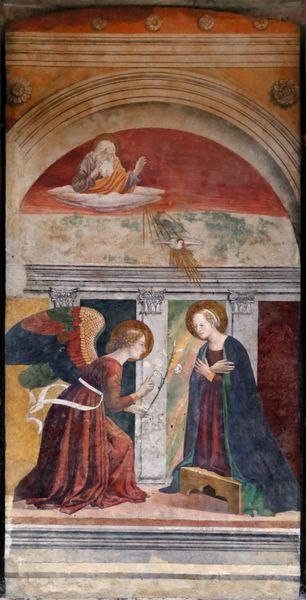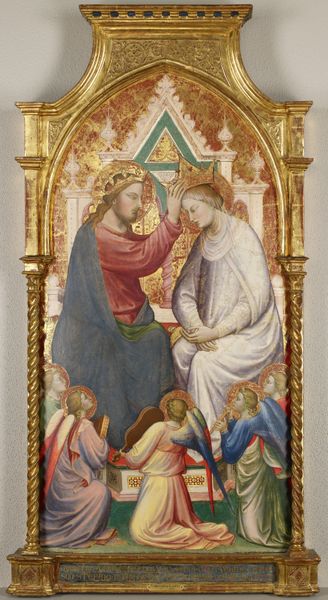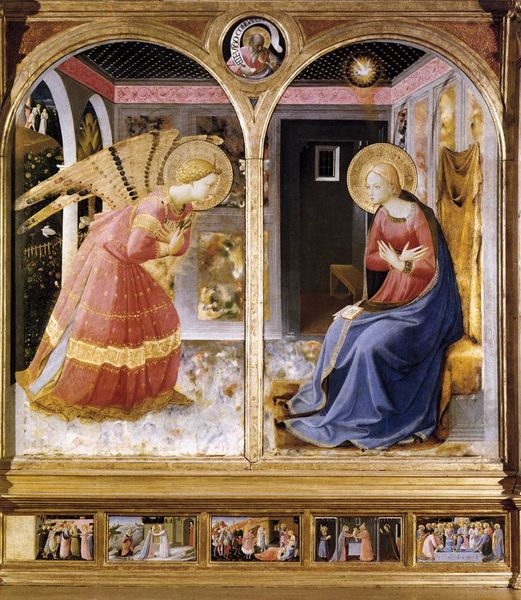
panel, painting, oil-paint
#
portrait
#
panel
#
allegory
#
painting
#
oil-paint
#
figuration
#
oil painting
#
history-painting
#
academic-art
#
italian-renaissance
#
early-renaissance
#
realism
Copyright: Public domain
Curator: Here we have a work entitled "Annunciazione," an oil on panel painting attributed to Francesco Botticini, a notable figure in the Italian Renaissance. Editor: The immediate feeling is one of quietude. Despite the significance of the moment depicted, there's a sense of calm restraint in the composition, in the muted colors, the somewhat flat rendering. Curator: I agree. If we consider the use of tempera and oil paint, it's easy to appreciate Botticini's subtle handling. The process of layering these pigments on the panel contributes to the soft, almost ethereal glow of the figures. It reflects the workshops practices of the time. Editor: Absolutely. But this representation of the Annunciation offers more than aesthetic beauty. Consider the space, the architectural rendering, the tiled floors, the looming pillars. These compositional choices serve as deliberate backdrops. It emphasizes the sociopolitical climate of that era. This work places Mary in conversation with issues surrounding female agency, or lack thereof. Curator: Note, too, the material reality of the panel itself, how Botticini uses the wood's grain to create a sense of depth. Look at the halo made of gold leaf, drawing in our eyes to appreciate its luxurious, devotional purpose. It highlights economic investment of its commissioner and it invites further analysis of artistic consumption at that time. Editor: And there's something unsettling in how closed off these figures are, separated by a pillar, self-contained. The way their bodies don’t quite meet. It evokes Mary's personal struggle as well as the social limitations placed on women within Renaissance society, their choices dictated and controlled. This piece prompts vital conversations around intersectional oppressions within societal structures. Curator: In dissecting both the craft and construction of its creation, we are better equipped to understand Botticini's subtle ingenuity and his placement within Renaissance art production. Editor: Examining the narrative through our contemporary understanding encourages viewers to consider historical perspectives of art in our global society.
Comments
No comments
Be the first to comment and join the conversation on the ultimate creative platform.













